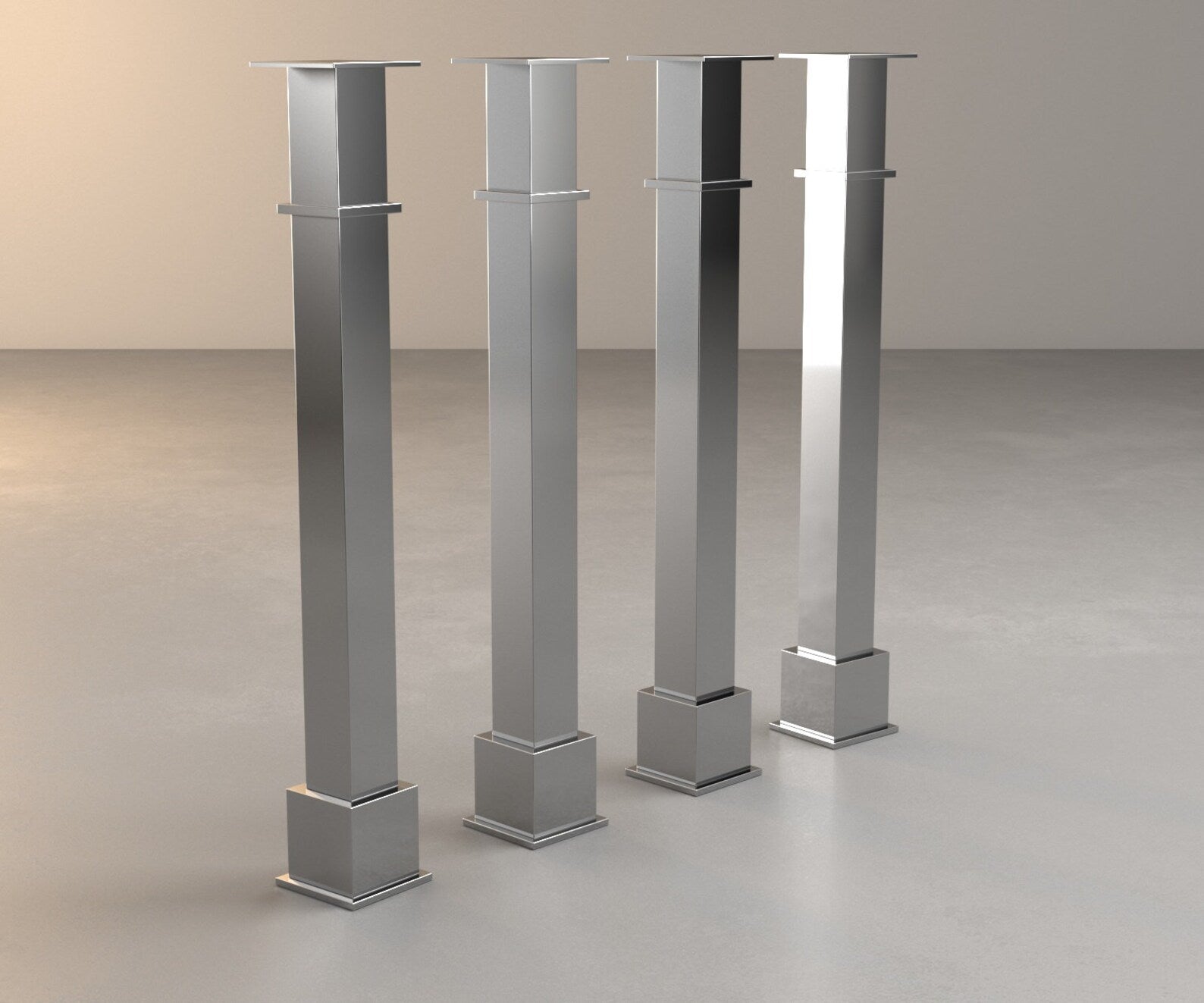Customize Your Kitchen Look with Special Legs For Kitchen Island Options
Customize Your Kitchen Look with Special Legs For Kitchen Island Options
Blog Article
An Overview to Choosing the Perfect Legs For Kitchen Area Island for Your Home
Choosing the optimal legs for your cooking area island is a nuanced choice that influences both the performance and aesthetic charm of this central area. Variables such as elevation, materials, and design play a vital function in integrating your island with the overall kitchen area layout. Additionally, understanding the relevance of stability and maintenance can considerably affect your choice. As you consider these elements, it ends up being obvious that the appropriate legs can change not just the appearance of your kitchen area yet also its usability for years to find. What specific features should you prioritize in this option procedure?

Comprehending Kitchen Island Legs
When picking legs for a kitchen area island, it's important to recognize their useful and aesthetic duties in the total style. The legs offer as a crucial support system, making sure stability and toughness for the island, which commonly functions as a work space, dining location, or gathering place. For that reason, the choice of material and building and construction technique should be durable enough to endure everyday usage and possible wear.
Along with their architectural responsibilities, legs contribute substantially to the island's aesthetic charm. They can boost the kitchen's style, whether through conventional, modern, or diverse styles. The elevation and proportion of the legs are likewise important factors to consider; they have to integrate with the island's countertop height while ensuring comfy seating for those making use of the room.
Moreover, the leg layout can affect the total circulation of the cooking area. Open, ventilated leg styles can produce a sense of lightness, while strong, significant legs might communicate an extra grounded and secure aesthetic - Legs For Kitchen Island. Recognizing these functional and visual aspects will guide house owners in making educated options that match their kitchen's layout and boost its functionality
Popular Styles and Materials
The choice of legs for a kitchen area island includes a variety of preferred designs and products, each offering distinct qualities that can boost both functionality and aesthetics. Amongst one of the most sought-after designs are contemporary, rustic, and traditional. Contemporary legs often include streamlined, minimal designs that stress simpleness and clean lines, making them perfect for modern-day kitchen areas. Rustic designs, on the various other hand, embrace natural environments and typically display redeemed wood or troubled finishes, including warmth and beauty to the space. Conventional legs generally exhibit luxuriant information and craftsmanship, enhancing traditional cooking area designs.

Elevation and Security Considerations

The legs of the cooking area island should give appropriate support, guaranteeing that the framework can withstand day-to-day use without tottering or shifting. Product selection plays a significant role in security; metal legs, for instance, tend to supply higher stamina compared to wood.
Matching Your Kitchen Area Visual
Choosing the ideal legs for your cooking area island goes past capability; it additionally plays a substantial role in the general aesthetic of the area (Legs For Kitchen Island). When choosing legs, think about the layout style of your kitchen area.
Color is one more critical element. Legs that complement or contrast with your island's surface and surrounding cabinets can produce visual harmony or striking focal factors. Coupling dark timber legs with a light marble counter top can add depth and interest. Additionally, consider the coating of the legs; matte, glossy, or distinctive surfaces can substantially impact the overall feeling of the kitchen.
Installment and Maintenance Tips
Installing cooking area island legs requires cautious interest to detail to ensure both stability and visual appeal. Use a stud finder to find wall surface studs if you are connecting the legs to a wall surface or using brackets for included assistance.
When securing the legs, make use of top quality screws and, if needed, timber adhesive for added strength. For metal legs, make sure that you are using proper supports and tools to stop damage to your flooring. It is suggested to look for levelness after setup, making changes as needed to stay clear of tottering.
Clean the legs with an appropriate cleaner, staying clear of abrasive products that might scrape the surface area. By adhering to these installment and upkeep suggestions, you can guarantee that your kitchen island legs continue to be both useful and aesthetically attractive.
Final Thought
In final thought, selecting the ideal legs for a kitchen island necessitates cautious consideration of elevation, security, and aesthetic compatibility. Ultimately, thoughtful leg option plays an important duty in raising both the usefulness and style of the kitchen area.
When selecting legs for a kitchen area island, it's essential to recognize their visual and functional functions in the general style. Open, airy leg designs can create a sense of lightness, while solid, significant legs might communicate a much more grounded and secure aesthetic. The legs of the kitchen area island must provide appropriate assistance, guaranteeing that the framework can hold up against everyday usage without shifting or tottering.Mounting kitchen island legs requires cautious focus to detail to make sure both security and visual appeal.In conclusion, picking the appropriate legs for a kitchen island requires careful consideration of height, security, and aesthetic compatibility.
Report this page